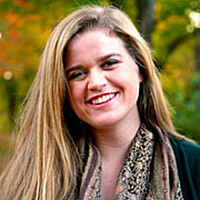Triplets to attend MIT. What are the odds?
Loading...
Christopher, Claire, and Edward Goul of Newport Beach, Calif., have all been admitted to the prestigious Massachusetts Institute of Technology, a rare accomplishment for one family member, much less so for three siblings.
Even rarer still is they are triplets.
What are the odds? Not very high say statistics.
There were 17.5 million students enrolled at undergraduate institutions in the US in the fall of 2013, a number that will stay steady for the entirety of 2015 according to the National Center for Education Statistics.
MIT reports that 18,306 students applied for a spot in MIT's class of 2019, and that the university admitted 1,467, or eight percent.
Triplets have been jointly admitted to selective universities before, but it isn't a common occurrence.
In 2004, triplets Lil, Helen, and Kate Armstrong were all admitted to Cambridge University, a first for the historic institution.
According to a report by the Boston Globe, "School officials say triplets have attended the Massachusetts Institute of Technology together before, but it is very rare."
The college admissions process can be especially difficult for high-achieving multiples, says a triplets-focused New York Times article. Siblings feel an obligation to each other, and may even give up applying to some Ivy League schools to ensure that their brother or sister gets a spot.
But research suggests that multiples should be bolder about applying to the same selective schools.
An article published by University of Chicago's "Core" Magazine reveals that the competitive university had 16 sets of twins enrolled during the 2013-2014 academic year. That's a high number for a college with a 10 percent acceptance rate.
The Goul siblings are already forging distinct paths in their college careers. Christopher plans on studying electrical engineering, while Claire and Edward will take classes in biology, math, and physics, notes the Boston Globe.
The triplets look forward to spending time together at MIT, just not too much time.
The odds are they'll see each other "once every few months or so," Claire tells ABC News before quickly adding, "or a week...we'll see each other."








